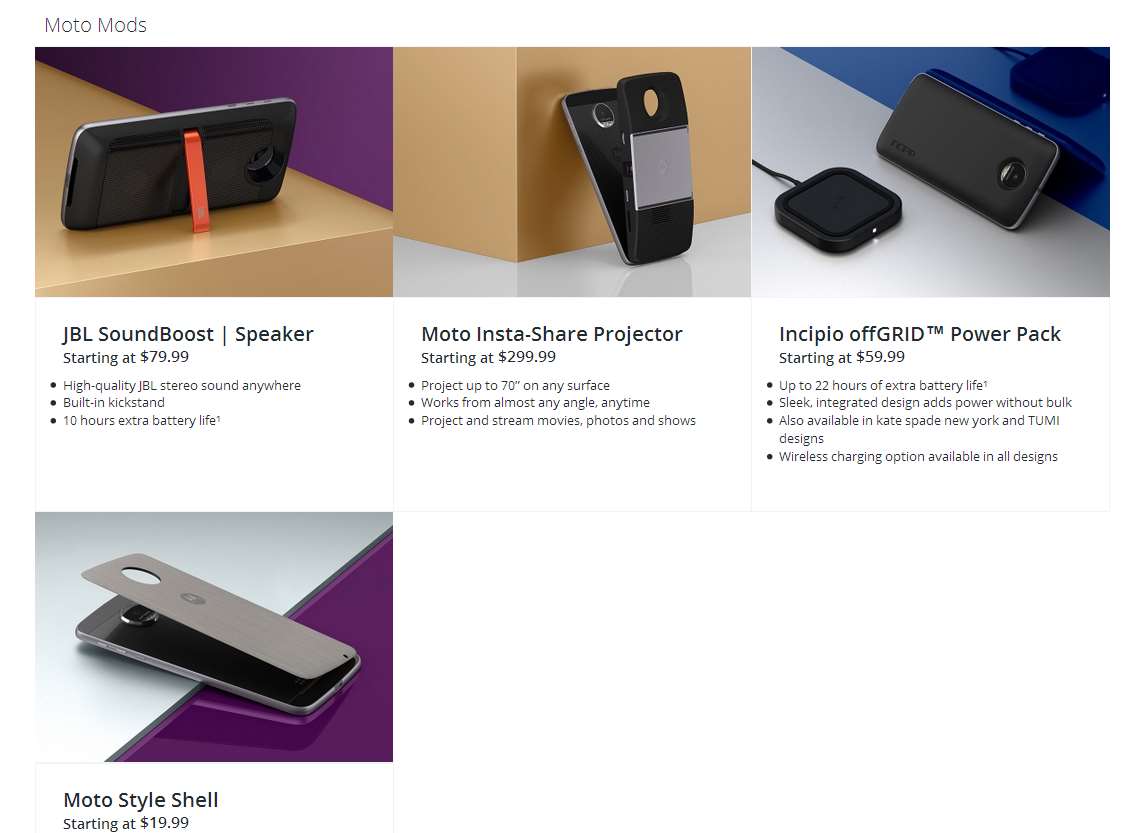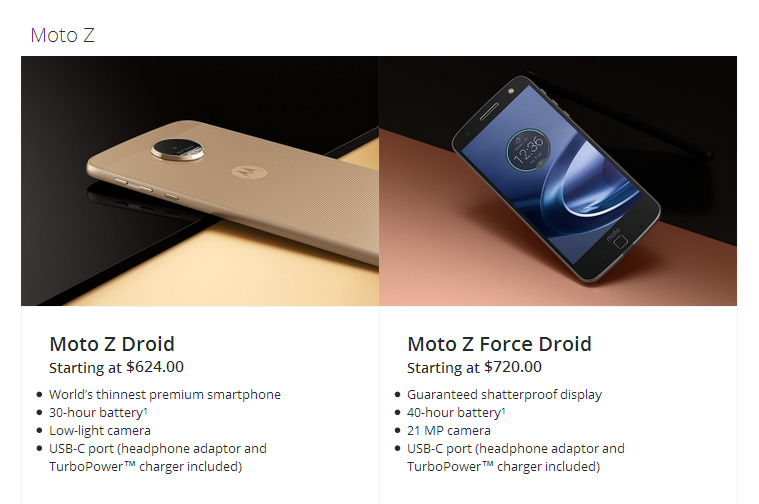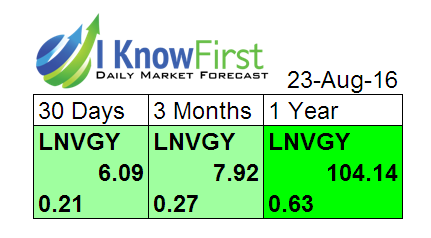Lenovo Stock Prediction: Partnership With Microsoft Is A Tailwind For Lenovo’s Mobile Business
![]() The article was written by Motek Moyen Research Seeking Alpha’s #1 Writer on Long Ideas and #2 in Technology – Senior Analyst at I Know First.
The article was written by Motek Moyen Research Seeking Alpha’s #1 Writer on Long Ideas and #2 in Technology – Senior Analyst at I Know First.
Lenovo Stock Prediction
Summary:
- Lenovo inked a patent cross-licensing deal with Microsoft.
- Lenovo has also agreed to pre-install Microsoft apps on select Android phones. This could mean Lenovo is no longer paying royalty fees over Microsoft patents on Android.
- I like how the Lenovo brand is now focused on mid-range and high-end phones. Zuk is Lenovo’s new brand for entry-level phones.
- Carriers are now supporting Lenovo’s mid-range Vibe Android phones.
- LNVGY has a strong buy signal based on its one-year algorithmic forecast. The stock trades at a very low TTM Price/Sales ratio of 0.16.
Lenovo’s (LNVGY) new patent cross-licensing deal with Microsoft (MSFT) is a positive development for both firms. Lenovo and its Motorola Mobility subsidiary can expect much lower (or no more) overhead costs from licensing Microsoft patents covering smartphones and tablets. In exchange, Lenovo will install Microsoft’s mobile apps like Skype, Office 365, and OneDrive on select Android phones.
Lenovo ended 2015 as the world’s third biggest vendor of smartphones, just behind Samsung (SSNLF) and Apple (AAPL). Lenovo is still the most successful PC vendor to branch out to smartphones. To date, Lenovo has sold more phones than Acer, Asustek, or Hewlett-Packard (HPQ). Lenovo is therefore still a good long-term bet for investors. Lenovo, the world’s top vendor of personal computers, proved it could also become a leader in smartphones.
The deal with Microsoft will allow Lenovo to increase its profit margins on Vibe and Moto-branded smartphones. Eliminating or greatly reducing the $5-$15 per Android device royalty fees to Microsoft adds to operating margins over Lenovo and Moto phones. The recent deal with Microsoft will help Lenovo make money out of its smartphone business.
The savings from inking the deal with Microsoft is a much-needed help for Lenovo’s troubled mobile division.
Why Lenovo Needs A Helping Hand In Mobile
The pre-tax loss $469 million of its mobile division caused Lenovo to card its first annual lost in seven years. Lenovo explained that its troubles in smartphones were mostly caused by its unprofitable low-end phones. Consequently, Lenovo’s stock price has posted a YTD return of -35.38%. Being a top vendor of phones was a stock market bane for LNVGY.
Lenovo therefore has an urgent need to reverse its losses on mobile to halt the bearish sentiment over its stock. Microsoft discounting (or giving away free) its Android patent licensing fees is a timely helping hand for Lenovo’s mobile division. A savings of $5-$15 per Android phone can instead be spent on marketing/advertising budgets.
Lenovo Will Come Back Stronger In Smartphones
The turnaround story of Lenovo’s mobile division is also helped by its move to streamline its phone products. Lenovo has also revamped its phone business. It has merged its Lenovo and Motorola phones under a single supply-chain structure. This move of consolidating its two phone divisions will reportedly save money like it did when Lenovo integrated its PC and enterprise computing products under a single supply-chain structure.
The Motorola brand has also been discarded. The new Vibe and Moto Android phones are now both under the Lenovo brand. Motorola’s old flagship model, Moto X, has a new successor, the Lenovo Moto Z. Lenovo is now also trying to make more money through accessories. The Moto Mods product line of accessories allow people to personalize/customize their Moto Android phones.

(Source: Lenovo)
Of course, it is natural to assume that Lenovo gets a cut from third-party accessories under its Moto Mods program. Lenovo’s Moto Mods program is attracting luxury product manufactures like Hasselblad to create new accessories for the Moto Z. Rumor has it that Lenovo will soon sell a Hasselblad camera module for its Moto Z handsets.
The marketing windfall of getting associated with the Hasselblad firm is great for the Moto Z. Hasselblad is famous for selling $13,500-$50,000 digital medium format cameras. Buying a Moto Z might be the cheapest way to own a Hasselblad camera.
The high price tags of the Moto Z Droid and Moto Z means Lenovo is also eager to loosen Samsung and Apple’s duopoly on high-end smartphones. This is a shrewd move for Lenovo since there is really little to almost zero profit to be made on $100 Android phones. The Moto product line is for Lenovo’s luxury handsets. The Vibe product line is the company’s mid-range $150-$300 handsets.

(Source: Lenovo)
Verizon (VZ) has the exclusive rights to distribute the Moto Z phones in the U.S. until Q4 2016. The mid-range Vibe product line is also getting the support of carriers in Asia. In the Philippines, the two top telcos, Smart and Globe, are both offering the mid-range Vibe K4 Note phablets on their P999/month ($21.72/month) plans. Smart also offers the Lenovo A2010 in its more affordable post-paid plans.

(Source: Lenovo Philippines)
My point is that Lenovo enjoys the backing of tier-1 wireless carriers. The future performance of the mobile business of Lenovo is a lot better when carriers subsidize mid-range Vibe and high-end Moto Z phones.
Zuk Is Lenovo’s Brand For Entry-Level Phones
I am not happy about Lenovo still engaging itself in low-priced Android phones. However, it’s a consolation that Lenovo brand name won’t be used on cheap Android phones. Lenovo is using its subsidiary Zuk Mobile as its marketing arm for entry-level/mid-range Android phones.
By keeping the Lenovo brand free from the burden of selling low-profit smartphones, Lenovo could eventually establish itself as the anti-thesis of Oppo and Vivo. Oppo and Vivo are Chinese firms specializing in dirt-cheap Android phones. They both help unseat Lenovo from among the top five phone vendors in China and the world.
Investors would probably laud Lenovo’s efforts to shed its image of just another Chinese firm selling cheap Android phones.
Conclusion
Lenovo’s beaten-down stock appears to be a bargain for long-term investors. I believe that this multi-faceted Chinese company has a strong future in smartphones. The shift toward higher-margin phones is already a good sign of better times to come. Microsoft’s help is also another small but important tailwind for Lenovo’s mobile division.
I rate LNVGY as a buy also because it trades at a very low Price/Sales ratio of 0.16. Its rival PC and smartphone vendor, Asustek has a higher P/S ratio of 0.41. It is my firm belief that Lenovo will continue to sell more phones and computers than Asustek.
My long recommendation for Lenovo is again backed by its strong buy signal based on its one-year algorithmic forecast signal score of +104.14. The predictability factor is also very high, 0.63.














